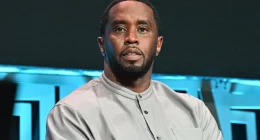This decision coincides with projections of increasing state debt, which is anticipated to reach $42 billion by the end of the decade.

The removal of the electricity credit is expected to increase financial pressure on many households.
Laura West, a retired school principal, stated that “it would be a massive kick in the guts”.
“Life is a real struggle just trying to be able to meet basic needs and wants,” she said.
Analysis indicates that the average household will face increased costs, with power and water expenses rising by $94 annually.
Car running costs are predicted to increase by $33 per year, and the emergency services levy will increase by $16.
Public transport users could see savings of about $195 but overall households are expected to be $348 worse off compared to the previous year.
Shadow Treasurer Sandra Brewer commented that “the budget isn’t exactly telling the truth”.
“They’ve cooked the books. They’ve changed the reference year to exclude the $400 electricity credit,” she said.

Treasurer Rita Saffioti aims to diversify the state’s economy away from its reliance on trade with China, focusing on bolstering local manufacturing.
“This budget reinforces the walls of fortress WA,” she said.
Aaron Morey from the Chamber of Commerce and Industry WA said “just like Taylor Swift, the Government has entered a new era”.
“It’s moving from the roads era to the industrial era,” she said.
A significant portion of the budget is allocated to health and trying to address the ongoing housing crisis. Casey Pateman, an Ellenbrook mother struggling with housing affordability, said “every time I’ve tried to get ahead and I think oh yeah everything’s going well, something else comes up.”

Despite previous commitments to reduce state debt, projections indicate a substantial increase. The current debt of $33.5 billion is forecast to rise to $42 billion by the end of the decade, partly attributed to population growth in Perth.
The annual interest bill on the state’s debt is $2 billion.
Rachel Siewert from the Western Australian Council of Social Service acknowledged some positive aspects of the budget.
“Having cheaper transport fares will help people, having access to breakfast programs will help people, having access to a rent relief scheme will help people,” she said.
“Our point is, we need that and more.”
Saffioti said the budget was “implementing a plan that will shape our state for decades to come”.






